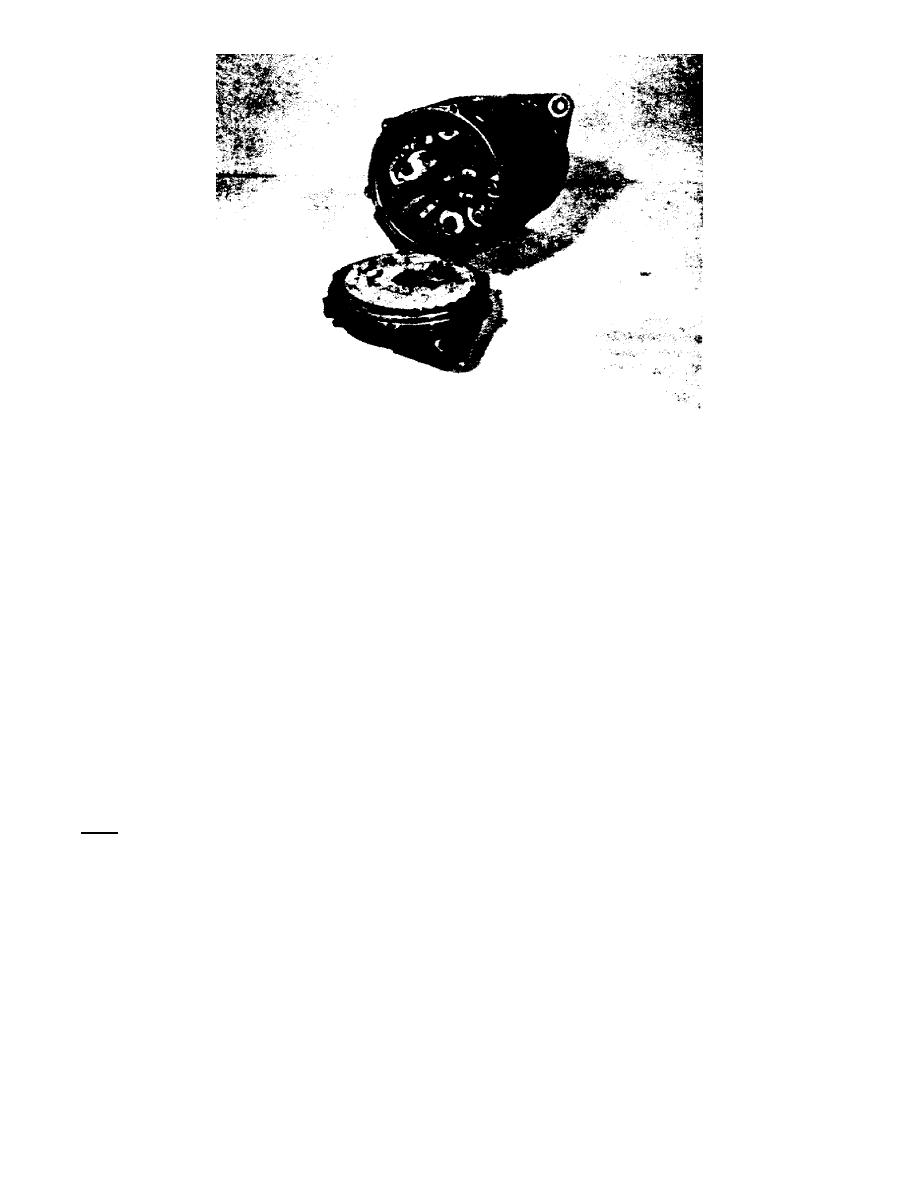
Figure 17.
SECTION V.
CLEANING, INSPECTION, AND TESTING.
17.
CLEANING.
a. Inspect screws, nuts, and plugs for worn or damaged threads and
mutilated screw slots or wrench sockets. Inspect smaller hardware items such as
flat washers, etc, for breaks and other obvious damage. Replace all defective
hardware items.
b. Minor thread damage can be repaired by chasing threads with a tap or die
of correct size.
c. Discard all preformed packings, gaskets, oil seals, and brushes, as
these parts are to be replaced during assembly. Discard sliprings and bearings
that have been removed.
d. Clean stator assembly, rotor, and brush holder with a cloth dampened in
volatile mineral spirits or drycleaning solvent. Do not soak parts in solvent.
Dry with compressed air. Take care not to damage insulation, cables, or windings.
e.
Refer to TM 9-214 and clean and inspect bearings as outlined in the
manual.
Note. - Ball bearings are sealed and packed with lubricant and will normally
require cleaning only at repair periods. Cooling ducts in stator and rotor
assemblies should be kept free of dirt and grease. A thin rod can be used
to loosen caked dirt.
f. If sliprings are rough or have minor pits, polish them with No 000 or
finer sandpaper. Clean rings and rotor with compressed air after polishing rings.
CAUTION. - Do not use emery cloth to polish sliprings.
Fragments from emery cloth
may short circuit rotor.
OS 010, 2-P14



 Previous Page
Previous Page
